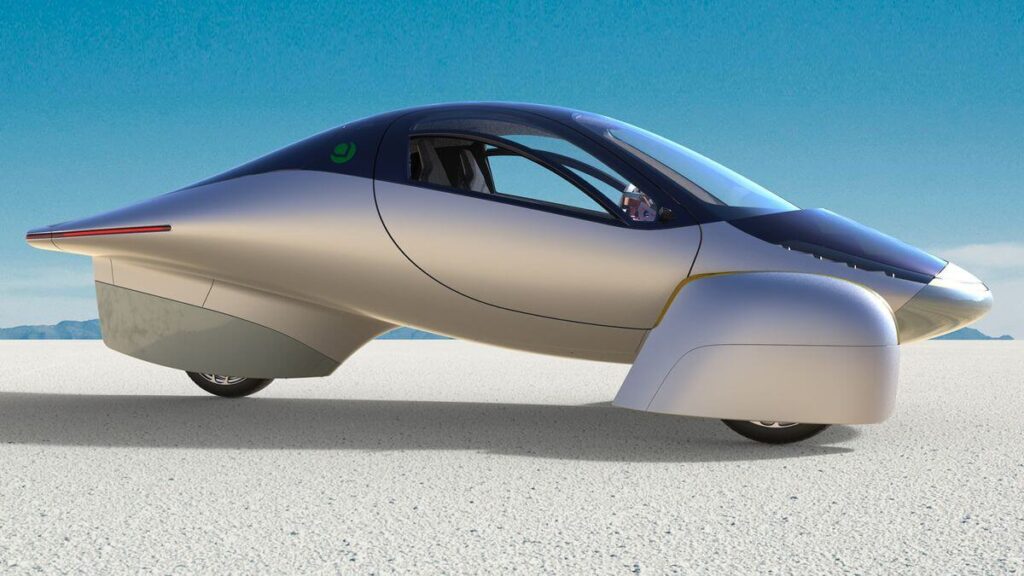Estimated reading time: 10 minutes
Since solar energy is the future, new solar technology will continue to develop as the industry matures.
Here we’ll go through the top 10 new solar innovations and briefly cover how these ideas work (or are intended to work), strengths and weaknesses of designs, and where their production and implementation are at.
These fresh solar solutions are at different stages: some are waiting for funding or improved designs, while others are being tested, manufactured, and distributed.
For this reason, don’t expect to be able to order these solar products immediately– many are in the works and others are geared toward commercial or utility solar production rather than residential.
However, we want to share innovations that are taking form 1) to get you pumped and 2) to help inspire other ideas.
Floatovoltaics (Floating Solar Farms).
Solar Cars.
Solar Windows.
Space-based Solar.
Solar Skin for Panels.
Solar Roads.
Solar Desalination Process.
Solar Paint.
Solar in Fabric.
Solar Production at Night.
1. Floating Solar Farms (Floatovoltaics).
Usually, environmentalists are not enthusiastic about man-made materials floating in bodies of water. * cue pictures of sad turtles with plastic pollution *.
However, solar ocean farms, also known as “floatovoltaics” (fun name, right?) are interesting energy solutions that are slowly starting to be implemented.
Traditional solar farms problematically take up a lot of space on land. Even when arrays are set up in lonesome deserts, some have concerns about how the presence of panels could disturb sensitive ecosystems.

Ideally, floatovoltaics are set up on calm waters like lakes, reservoirs, and basins. The systems are constructed of panels affixed to a buoy structure.
Floating systems also have lower installation costs than land farms and greater power production. Floatovoltaics can have up to 10% greater power production because of water’s cooling effect.
Additionally, floating panels can actually help with water management because they reduce water evaporation and prevent algae blooms that can harm humans, fish, and plants. This lowers water treatment costs and ultimately benefits the body of water.
On the flip side, we do not know the full environmental effects of the structures. For example, the shading could affect water temperature and concentration, which isn’t inherently problematic, but it could present some unknown consequences down the road.
Although the installation process could potentially be cheaper than installations on land, these systems would require more niche experience and knowledge.
2. Solar Cars.
If you’ve ever been stuck in stand-still highway traffic on a hot summer afternoon, you probably won’t be shocked to learn that transportation is the largest source of planet-warming pollution in the United States.
As electric vehicles are rising in popularity and accessibility (thanks to innovative companies like Tesla), customers are more open than ever to purchase EVs.
A California startup, Aptera, is offering a car that runs on solar energy. It is light-weight, aerodynamic, and definitely looks like something out of a superhero or Star Wars movie.

Aptera’s solar car is not technically a car, according to the company; they call it the world’s first “Never Charge Vehicle.” It has three wheels and is made of carbon, kevlar, and hemp.
Being 172″ long, 88″ wide and 57″ high with 25 cubic feet of luggage capacity, this solar car wouldn’t be your vehicle of choice for a road trip with the fam, but the product’s exciting possibilities have motivated many to get on the car’s waitlist.
3. Solar Windows.
Even though packed cities seem to have everything in large numbers (sights to see, places to eat, pigeons) there aren’t many open spaces. However, there are vertical surfaces: windows.
To take advantage of this space, several companies have looked into solar window technology.
Solar windows are classified as building-integrated photovoltaics (BIPV), and most designs for solar windows do not require the installation of an entirely new window; rather, the solar element is usually a coating that is applied to a window’s pane.
SolarWindow Technologies, Ubiquitous Energy, and Physee PowerWindow are some of the primary solar window companies leading the charge. Their products are under development and not currently available for sale.

Ubiquitous Energy’s idea is to coat windows with a substance that doesn’t change a pane’s physical appearance or transparency. The company doesn’t have a lot of project examples, but they installed their first window at company headquarters in January 2020.
I wasn’t able to find any pricing or installation information, so I’m assuming that it is currently being determined.
Physee PowerWindow is taking a different approach. Instead of adding something to the surface of the glass, Physee installs small solar panels along the edges of glass panes to generate electricity from the sun.
They also don’t have many installations yet; their first and only was at a Dutch bank, and the electricity produced from the project is pretty minimal.
4. Space-based Solar
This one definitely is thinking outside of the box. In fact, it’s thinking out of this world because one of solar’s major issues is that it requires physical space.
The idea of space-based solar has actually been around for a while, and China has announced that they have plans to launch a system at some point. If we need physical space, it makes sense to go to outer space.
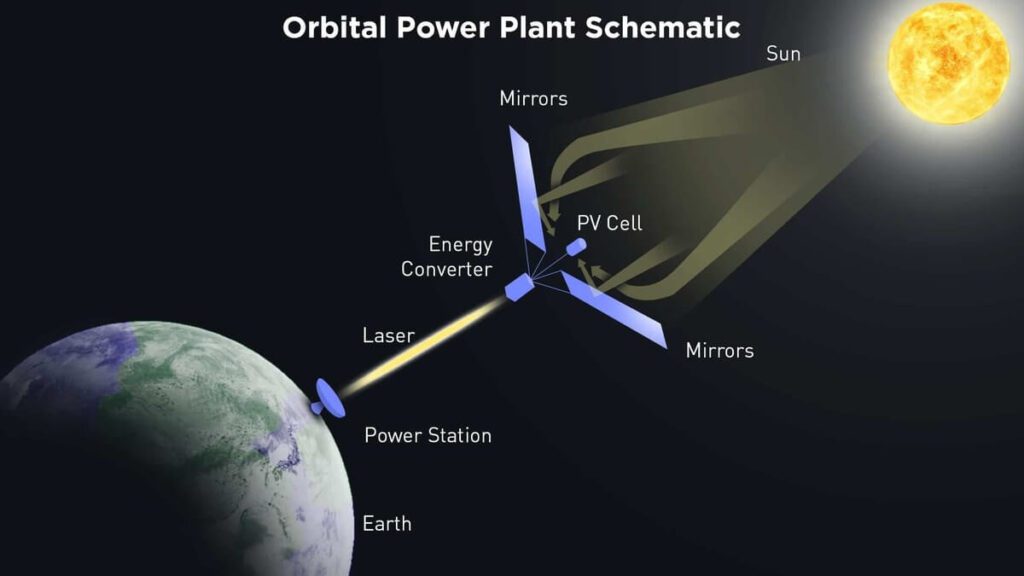
An orbital solar power station could inexhaustibly produce clean energy because the sun always shines in space. The array would orbit 22,000 miles above Earth and then “beam” the energy back to the planet.
Understandably, this approach’s biggest hurdle is getting the system shipped out to space– the production cost would be pretty massive, and the system’s distance would naturally present some difficulties when the system requires repairs.
5. Solar Skin for Panels
Tesla’s new Solar Roof demonstrates how the aesthetics of residential rooftop solar are advancing alongside panel efficiency.
While the Solar Roof’s PV tiles replace your existing roof, Sistine Solar has developed SolarSkin, which is a “skin,” that covers conventional solar panels to enhance their aesthetic appeal.
Usually, anything covering panels, such as dust or snow, will block panels from soaking up rays. Although SolarSkin covers the panels, the company claims that it minimally affects energy production.

The great thing is that the skin can help panels blend in with a roof’s pattern, materials, and color. Other decorative designs are also available.
SolarSkin uses color corrective algorithmic technology to develop their aesthetic overlays for any conventional solar-powered system.
There are a few possible weaknesses with SolarSkin. For example, a solar system with SolarSkin would cost 10% more than a typical installation without it.
Third parties are currently testing the product to determine how much the covering impacts solar efficiency. As far as aesthetically pleasing solar options go, however, SolarSkin boasts having 16-20% efficiency in comparison to the Tesla Solar Roof’s 8-10%.
6. Solar Roads
Roads spread across the United States like veins– they connect cities, but they also could help connect people to more electricity.
Highways run over almost 4 million miles of land in the United States, and this available space makes solar roads an exciting solution. Currently, there are some major issues with the technology, but despite these weaknesses, we’ll go over the general idea and possibilities of this technology.
Solar Roadways is an Idaho-based company that has some installations under their belts. Looking at their website, it seems like they’ve taken many of roads’ issues into consideration.
For example, the site claims that the roads wouldn’t accumulate snow and ice, lanes and directions could light up, and stormwater could be captured and collected before contaminating waterways.
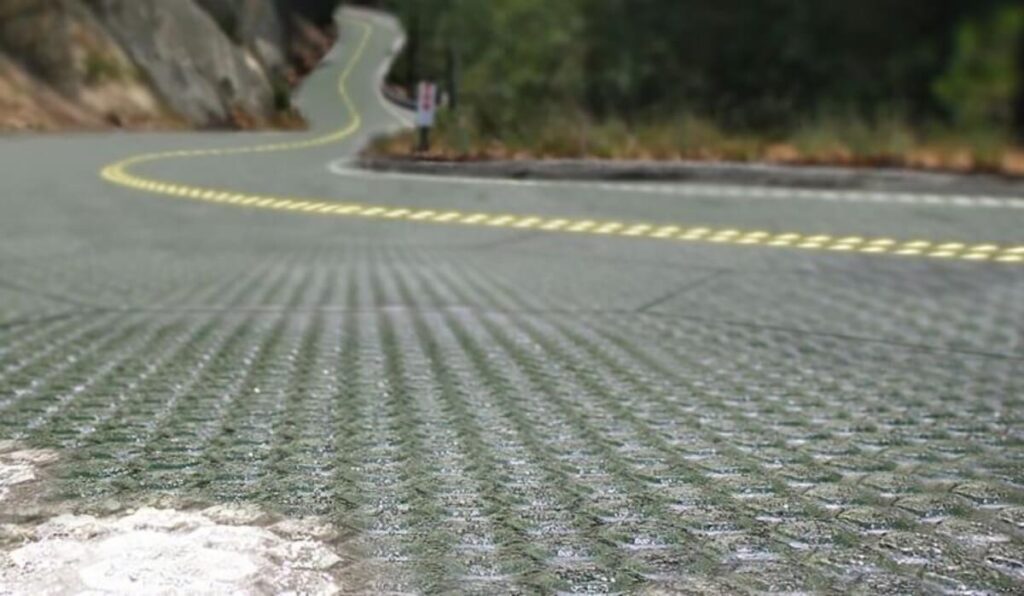
See why this is exciting? It sounds like an environmentally friendly Mario Kart course.
However, Solar Roadways has the challenge of balancing durability, traction, and production efficiency. Critics of the product state that it would probably be easier and more efficient to just install solar noise barriers on the sides of highways rather than the road surface itself.
Solar Roadways has still gotten a lot of attention and funding (including from the U.S. Department of Transportation). Their tech has also passed various tests performed by the University of Toledo, Norwich University, Savannah State University, and Marquette University.
The tests evaluated traction, impact resistance, moisture conditioning, freeze/thaw cycling, and how the road panels would hold up to heavy vehicles through simulation.
Understandably, Solar Roadways wants to get their design right on other surfaces (such as bike trails and sidewalks) before they move onto more difficult ones like highways. According to the company website, highways are their ultimate destination but will most likely be the last.
Currently, Solar Roadways is designing the SR5, which will be their first commercially available product. They are also planning on creating an in-house microinverter since other commercial models haven’t worked well with their unique panels.
Early adopters can join the waitlist.
7. Solar Desalination Process
97% of the earth’s water is in the ocean. As human beings, we depend on fresh water to not only hydrate and clean ourselves but also to aid manufacturing, mining, electricity production, etc.
This dependency makes desalination very important. Fortunately, scientists have discovered that solar power can play a key role in desalination.
The proposed process is pretty simple and goes as follows: salt water in a desalination unit will be heated by the sun, which will cause the liquid to evaporate. The water vapor rises to the top of the unit and then collects and condenses as fresh water on the inside lid.

This process could either take place in a body of saltwater where floating panels could constantly and passively deliver fresh water through pipes to the shore, or the system could serve a single household by using a panel on a tank of saltwater.
It is estimated that one square meter of a solar collecting area could satisfy the drinking water needs of one person for a day, and a system built according to the needs of a family would be around $100.
8. Solar Paint
While photovoltaic (PV) rooftop systems have come a long way, they’re still kind of bulky. Even though most people are physically capable of installing their own PV systems with proper directions, simply painting a surface would significantly simplify the solar installation process.
Although solar paint is far off from being super effective when implemented, here is what innovators have come up with so far.
Currently, there are three types of solar paint being developed: hydrogen paint, quantum dot solar cells, and perovskite paint.
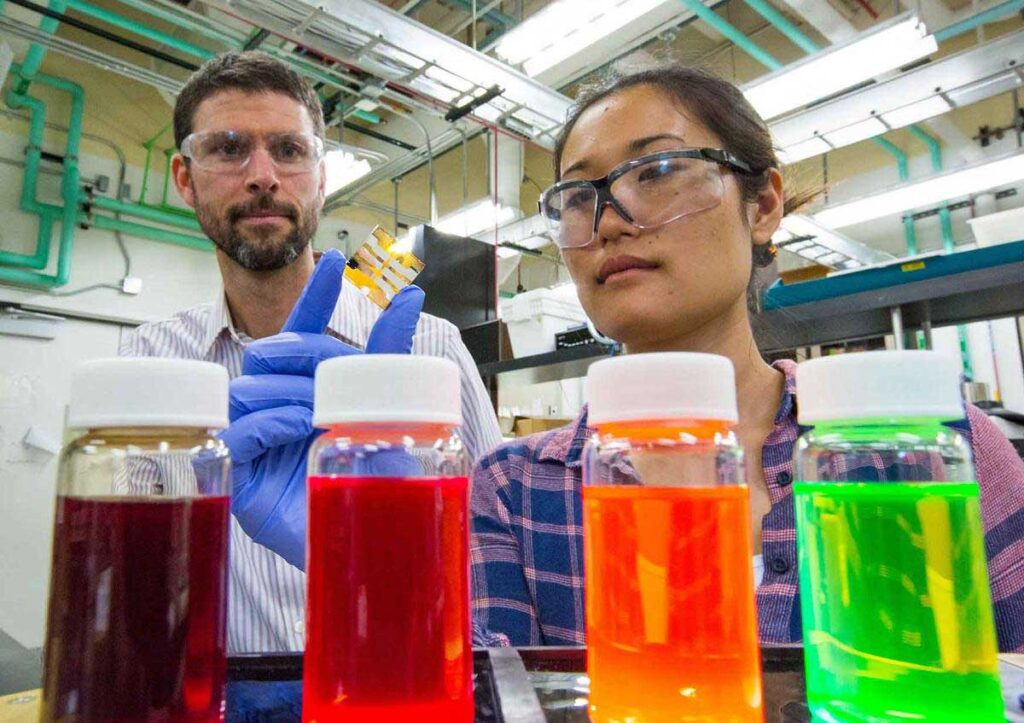
Hydrogen paint was developed by researchers from the Royal Melbourne Institute of Technology (RMIT). The paint generates energy from water vapor.
Substances in the paint absorb moisture from the air and cause the paint to use solar energy to break down the absorbed moisture into hydrogen and oxygen. The hydrogen can then be used to produce clean energy.
Allegedly, this approach is environmentally friendly, cost-effective, and could be implemented in a variety of locations.
Quantum dot solar cells (PV paint) were developed by the University of Toronto and consists of nanoscale semiconductors. The paint captures light and turns it into an electric current.
With this option, cost per watt is much cheaper, and potentially, these dots could be up to 11% more efficient than conventional PV panels.
Perovskite paint is known as spray-on solar cells. Perovskite solar cells can take liquid form and be applied to vehicles and roofs.
9. Solar in Fabric
What if solar was portable, wearable, and even stylish?
A company called Solar Fabric has developed solar cells that can be woven into textiles for clothing, canopies, and more.

The solar cells used in fabric are thin film and organic polymer-based, making the fabric less efficient than traditional silicon cells, but they’re flexible and can be produced quickly and cheaply.
The fabric could potentially come in handy by keeping a phone charged or monitoring health and activity. A society dependent on smartphone communication could highly value these small affordances.
Solar fabric is not currently on the market, so prices are unavailable, but early on, prices will likely be quite high compared to non-solar fabric.
10. Solar Production at Night
When I first saw this one, my mind immediately jumped to … the moon.
It turns out, however, that lunar panels are not the next big thing, but scientists are currently developing ways for panels to produce electricity when the day is done.
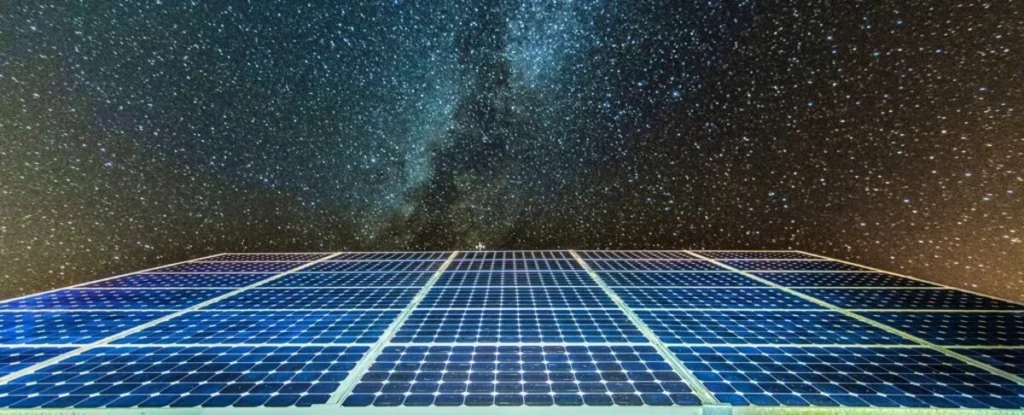
Here is one of the ideas: During the day, the sun will beat down on panels, and the solar cells are driven by radiative cooling. At night, panels release radiative heat built up over the day. That heat could be used to generate electricity.
If only similar technology could be developed to make something useful out of all the heated conversations on social media.
This night function for solar panels isn’t just a budding idea. New research on the topic was published in the January 2020 issue of the peer-reviewed journal ACS Photonics.
Jeremy Munday, an electrical and computer engineer from University of California, Davis, explained the concept in more depth:
” A regular solar cell generates power by absorbing sunlight, which causes a voltage to appear across the device and for current to flow. In these new devices, light is instead emitted and the current and voltage go in the opposite directions, but you still generate power. You have to use different materials, but the physics is the same.”
So panels would be producing energy in a different way, but it would help keep the panels producing when they would usually be useless.
Conclusion
As you can see, solar is powerful and it can be implemented just about everywhere.

Since PV rooftop technology has had time to mature, it has dominated the solar industry and become a financially realistic option for a wide variety of consumers
Some of these innovations have a ways to go before they can become more widely adopted (or even implemented at all), but it is exciting to see the solar possibilities that await consumers.
The more that people think, brainstorm, and experiment, the more successfully communities can transition to clean energy.

